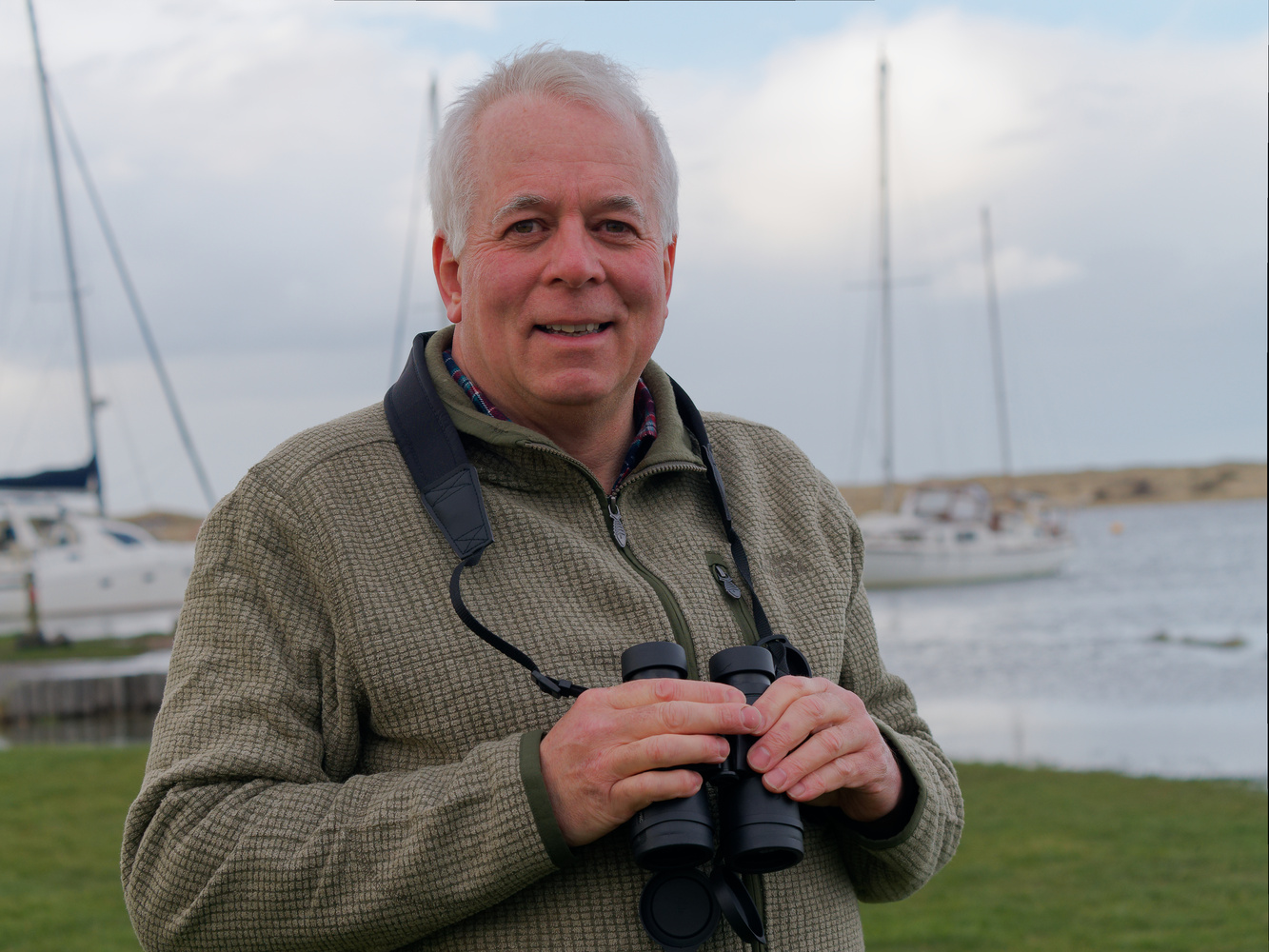If you look through the galleries here at Fstoppers, trending images on social media, or those on the pages of magazines, they usually depict beauty. Beauty is easy to like and is, understandably, popular. But there is something far harder to capture that is sublime.
Thinking back to my youth, I remember a girlfriend of mine decrying that the actors in TV programs were all good-looking. She was right. Characters had symmetrical features, their bodies were shapely, and they had winning smiles revealing perfectly set teeth. I was an awkward teenager and never great at quick compliments. Consequently, there was too long a pause before I told her that she could be an actress. She came back and said I had a good face for the radio and then added that didn’t have the voice for it. She was right, of course. But that was the end of my dreams of being a movie star or a radio DJ, and it heralded the end of that teenage romance.

Things haven’t changed much on TV or in the movies. Those industries are still dominated by beautiful women and ruggedly handsome men. They, of course, have talent too. Modern audiences are more discerning than film studios give them credit for, and wooden performances can still make a production flop.
The same applies to photography. Our audiences often seek out beauty in our photographs. Whatever genre you shoot, your photos will have popular appeal if they have an element of beauty. However, just like poor-quality acting by a handsome hunk can ruin a film, beauty alone in a photo isn’t enough. A photo must be well executed, because a poorly conceived image, no matter how beautiful the subject, won’t be compelling.
Is Beauty in the Eye of the Beholder?
Beauty is a difficult thing to describe. Despite it being said it is in the eye of the beholder, most people appreciate the same beautiful things. Who doesn’t love a glorious sunrise, a perfectly formed rose, or moonlight reflected off the sea, Brad Pitt, or Halle Berry?
Unsurprisingly, that appreciation of beauty can be skewed by fear and learned prejudices. I knew a man who was terrified of butterflies and birds – quite a handicap, as he was a gardener – and the most ignorant won’t see beauty but get hung up on people’s skin color. But those exceptions aside, an understanding of what is beautiful is universal. Consequently, beautiful photos are easy to like.

Soft Focus and the Slow Death of Natural Beauty
I joke with my wife that the deterioration of our eyes with age is an evolutionary adaptation. As we get older, we look at each other through soft-focus lenses that hide the wrinkles and blemishes brought on through time and the interesting and adventurous lives we've led so far.
Soft focus is a technique of old that photographers and filmmakers employ to supposedly enhance beauty. Look at older movies from the Golden Age of Hollywood up until the late 1990s and you will see the filter applied to, especially, women actors. Check the following trailer for the film Casablanca and note the increasing softness when Ingrid Bergman is in the frame.
Over time, models were airbrushed and then “Photoshopped” to give them supposedly perfect complexions. Now, Instagram applies automated filters that supposedly make people more beautiful. It’s now widely recognized that this idealization of what the human skin should look like to be beautiful is hugely damaging.
Cultural norms, these days driven by commercialization, try to dictate what is beautiful. Western ideals have led those standards globally. However, when I lived in Africa, the advertising posters for soft drinks featured far healthier-looking people than the stick figures you would see in their ads here in the West. It is a fake belief that is being peddled. In reality, the result of guzzling these chemical-filled acidic drinks just leads to obesity, heart disease, and rotten teeth.
Thanks to digital manipulation, what was considered by society to be beautiful has become inaccessible. Men’s chiseled features and most desirable female body shapes can often only be achieved through supposed enhancements on a computer. Photographs of people become harmful lies that destroy the esteem of those whose bodies don’t comply with an impossible set of rules. Thankfully, this imitation of beauty is being exposed as false and the idea that it is okay not to fit with it is more widely accepted. Still, it’s a brave portrait or boudoir photographer who will show their subjects, warts and all.
What Ever Happened to the Beautiful Things?
There was a period in history when human-made products were made to be beautiful. Ming Dynasty vases, sailing ships, furniture, clocks, printing presses, book covers, steam trains, and even cameras were things of beauty. I’ve long believed that creative people should surround themselves with items of beauty. The Industrial Revolution brought forward huge leaps in technology, but the designs were always aesthetically pleasing.
Yet, with the digital age, most cameras became solely utilitarian, bland lumps of plastic. Let’s face it, the mass-produced cameras from the biggest brands – Nikon, Sony, and Canon – are boring and uninspiring to look at. There have always been exceptions, especially from the smaller brands, such as Fujifilm and OM, that manage to produce great-looking gear. Happily, last year Nikon brought out a better-looking camera with the Z fc. Those big camera manufacturers should take a leaf out of the smaller brands’ books and create technology that looks great on top of being functional.

That may seem controversial, as beauty seems to fly in the face of the utilitarian design ideals of Bauhaus that suggested form follows function. But, if inspiration through beauty is seen as a function because it can inspire, then beauty becomes an important factor of design too.
Life Beyond Beauty Is Sublime
On the other hand, it doesn’t follow that the only thing we are attracted to is beauty. Sometimes, we photograph things that are awe-inspiring and not necessarily beautiful. In the aesthetics branch of philosophy, this is the sublime. Sublime is the quality of greatness beyond all measure. It is not limited to artistic, physical, and aesthetic greatness, but it can refer to moral, intellectual, and metaphysical greatness too.
If you have ever walked in a mountainous landscape, heard a lion road in the wide-open savannahs of Africa, or listened to and been moved by a speech by a great orator, that is sublime. The essayist, poet, and playwright Joseph Addison summed it up when he said of the Alps that they “filled the mind with an agreeable kind of horror.”

The Philosopher Edmund Burke argued that sublimity and beauty were mutually exclusive.
Emmanual Kant said that the sublime could not be held in an object. A raging sea, a thunderstorm, and the night sky are not sublime themselves. However, the apprehension we experience when we observe those things is what makes them sublime. Kant considered this as a priori knowledge: something universally valid but independent of previous experience.
So, if you stood in front of an awe-inspiring landscape, or within a thunderstorm, or were staring up at the stars, or watching a raging sea, or saw a bird diving into the sea for fish, if you were in front of an orchestra playing a Beethoven symphony, or moved by a long-experienced actor reciting a Shakespearean sonnet, that response you feel to that incomprehensible power over which you had no control is sublime.

Just like when confronted with beauty, meeting the sublime brings about physical reactions: pupils dilate, heartbeat quickens, hair stands on end, and shivers run down the spine.
The works of Ansel Adams can be considered sublime because one can be filled with awe by the staggering landscapes of Yosemite. His careful compositions and precise exposures were designed to show the power of the American landscape.
Horrifying images of warfare, oppression, and destitution; portraits of charismatic people both good and evil; the photos of the R101 airship exploding; the images of the detonations of atomic bombs on the Bikini Atoll; small figures dwarfed by the landscape around them; and deep space images showing countless galaxies each comprising billions of stars are examples of photos that could be considered sublime.

Creating sublime images is so much harder to capture in a photograph than beauty. Furthermore, it is becoming ever more difficult still because of the sheer number of photos that are taken every year, and some photos that would have awed us are now commonplace. Overexposure to subject matter reduces the impact and we become numb to what should fill us with wonderment.
Moreover, sublimity is something we lose when we display photographs on a phone screen. How can we be in awe of a picture that is a two-inch square?
The difference between beauty and sublime can be quite hard to grasp. This is only the briefest of introductions to the concept, and there are plenty of resources online to read up on the topic.
Do you pursue beauty or sublime in your photography? Is it something you had not considered before? It will be great to hear your thoughts in the comments about this topic.









Great article ! If I may add few thoughts :
- I think beauty is immediate, and sublime takes time to be considered. The beauty of a handsome girl or guy can be perceived quickly. But the sublime needs to be studied. I'm thinking about Botticelli's Venus, for example.
- It's true about the actors/actresses of past time, but (sorry for my French references, but I guess they are famous enough to be talked about) Jean-Paul Belmondo was not handsome, and often opposed to the dazzling Alain Delon. But these actors had a sublime charisma. And Delon said himself that being handsome wouldn't have been enough for him to last a long career.
- Finally, before the digital era, the stars and models were the exception, some demi-gods. Now, with Instagram, everybody wants to be a star. And, to that end, they copy the popular ones, not the meaningful ones, in a never-ending sisyphian movement.
All very true, Stephan. Thanks for the great comment.
All great points, some I agree with more than others. In fact, I don't like sharing my photos because people are looking for beauty, which they may or may not find, and blind to the sublime I'm attempting to convey. That's probably as much my fault as theirs since sublimity can be subjective as well.
Very true, John. I think it is sad that you feel that you cannot share your photos as there is an audience that appreciates the sublime.
I originally wrote a terse response, but don't want to be thought rude. While taking a bath (something we do every night here in Japan) I gave the subject a lot more thought and have, what I think is, a better response.
I recently got out of the hospital (they figured out some things can't be fixed, which my wife could have told them about me) and living in a very rural part of Japan in the mountains, almost no one speaks English at all and those few, not very well. If you ever come here, you won't have enough memory cards. :-) After all these years, my Japanese still sucks (one of the things that can't be fixed) so the hospital staff would bring hand-held translation devices when checking on me. They suck! Finally, they discovered a young half Japanese, half Filipino nurse who could speak rudimentary English she learned from her Filipino father and was thereafter "assigned" to me. "Beautiful" couldn't do her justice. After correcting for lighting and color in an image of her, adjusting a single pixel would create an aberration. If I had shown someone a photo of her, they would congratulate me on, what would be, a poor representation of the beauty that could only be appreciated with one's eyes. As you might imagine, there are a LOT of beautiful women here, their flaws only revealing themselves with conversation. This young woman was the sweetest, most thoughtful person I think I've ever met other than children, rivaling them for purity. THAT is the problem.
A photo is only a partial, imperfect reproduction of a thing. If I showed you her photo, you could never see the REAL beauty; the sublime. For me, taking the photo is the goal. Through my viewfinder (which is why i will NEVER go mirrorless) I am actually seeing the thing. I feel the wind blowing on my cheek, smell the odors wafting across my face, hear the sounds and in this case, know the woman. When I look at my photos, I remember all that; when anyone else in the world does, they have nothing to remember. And I will be disappointed.
Perhaps you are underestimating those who would view your work if you shared it more often.
Ivor recently published an article here that goes on about how nobody cares about the photos that anybody posts to Instagram. Yet I spend a good deal of time each day looking at photos on Instagram in an in-depth way. I have 15 "collections" of Instagram images that I curate for research and inspiration, and they are sorted by subject matter.
I not only write comments about the posts that people make, but I also share those posts privately with others ... friends of mine and I have conversations about photos that we see posted on Instagram. I also send messages to the person who took the photo, with questions that I have about it. I get a lot of great responses to my messages and learn even more about the photo because I took the time to ask the photographer about it.
I know there are more people like me, people who really care about the photos they see and who look at them in depth, even if they are being viewed on a 2 inch screen. I suggest that you give people a chance to show that they are not as shallow as you assume they are.
You had me until the last sentence: I don't think they're shallow. Sorry. I shouldn't have said anything.
I have no problem with any of the things you said in your original comment (before the edit). I didn't write my response to you to be critical of anything you said, but rather as a suggestion that you may find some insightful and appreciative viewers of your photos amongst the broader online community.
Oh. Okay. Thanks for the clarification. By the way, and for what it's worth, your photos are both beautiful and sublime. If you ever want to photograph wildlife in Japan, send me a message and I can help with the logistics.
My goodness - that would be amazing! But I don't even have a passport, and have never traveled overseas, so it would take a good deal of planning and preparation. But I am open to the idea and welcome such an opportunity.
I don't have much to add, but I do appreciate your article. I find getting the sublime image is much for fun than getting the beautiful (as in very pretty) one.
"Heard a lion road" ?
That's supposed to be "roar". "r" and "d" aren't that far away from each other on the keyboard.
.
PS: Usually, those who find typos are allowed to keep them. ;-)
Yes, it's a typo. Well spotted! I proofread this a dozen times and still missed it. It'll get corrected later.